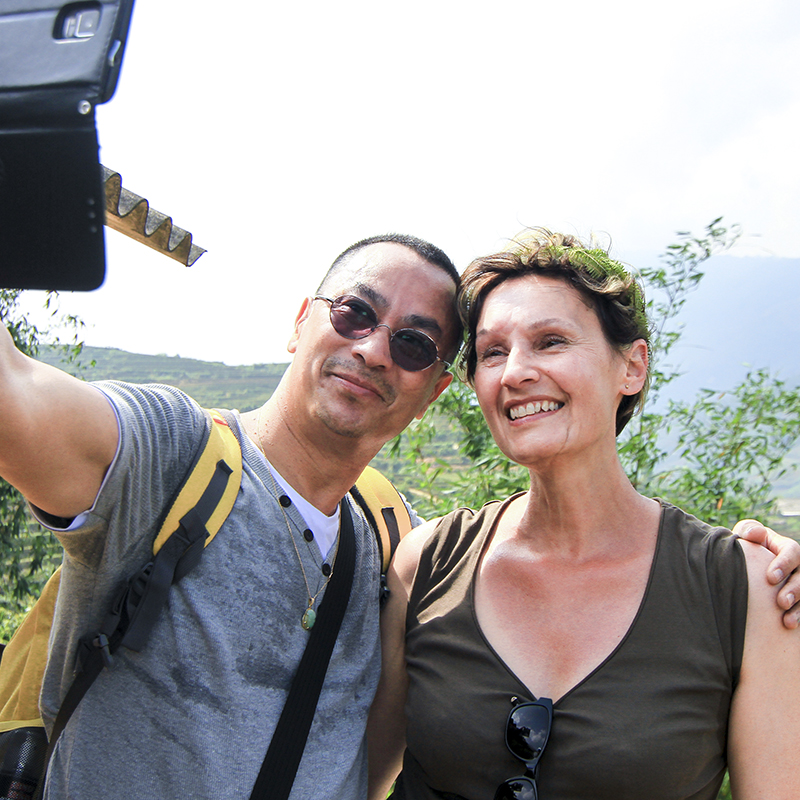The Full Cochinchina
Cochinchina was the most southern part (south ) east of Vietnam in Cambodia , especially forming the Mekong River Delta (the other two parts of Vietnam were Annam and Tonkin). In the sixteenth century, other names such Chinecochin or Champachine are attested . Initially not including the kingdom of Champa , the name will be expanded later in the French empire in the entire southern part . Locally it is called Nam Bộ (南 圻), meaning " southern border".
1/ Cochinchina (South Vietnam)
Cochin was the most southern part (south) east of Vietnam in Cambodia, especially forming the Mekong River Delta (the other two parts of Vietnam were Annam and Tonkin).
Its name derives from the use by the Portuguese city of Cochin to designate India (where later the name Indochina). In the sixteenth century, other names such Chinecochin or Champachine are attested. Initially not including the kingdom of Champa, the name will be expanded later in the French empire in the entire southern part. Locally it is called Nam Bộ (南 圻), meaning "southern border".
2/ History
Through archaeological excavations since the late 1990s, we know that the area has been inhabited for over 2000 years. Kingdoms that revolved around the ancient city of Angkor Borey (currently in the Cambodian province of Takev) and the ancient port of Oc Eo (now in the Vietnamese province of An Giang) are after the second century av. In BC - 111, in the reign of Wudi of the Han China, command Zhi (交趾 郡) was established among two other commands in the rest of Vietnam: Jiuzhen九 真 郡) and Ri'nan (日 南郡).
In the third century AD, Chinese envoys who visited the region décrirent a kingdom they called Funan.
Archaeologist Miriam Stark, who has conducted research since 1999 in the region, said that the Khmer who ruled the area in the seventeenth century duIXe empire, is only one of the last regimes that have succeeded in southern Mekong Delta.
In 1623, when the Khmer Empire began it's decline, King Chey Chettha of Cambodge II (1618-1628) authorizes the Annamite refugees fleeing the civil war between the Trinh and Nguyen to settle in the area of Prey Nokor, a former fishing village built on swamps and became the main seaport of the empire.
In 1698, Prince Canh Nguyen Hue sent by the court of Hue to establish a Annamite administration of the area and away from the supervision of Cambodia then decaying. Very quickly, Prey Nokor became Saigon (Saigon) before being renamed much later (1975) Ho Chi Minh City.
In 1757, the Annamite expansion continues with the colonization of the provinces of Psar Dek (renamed Sa Dec, reporting today in the province of Dong Thap) and Moat Chrouk later Chau Doc
In December 1845, a treaty was concluded between the Cambodian King Ang Duong and Commanders Annamite strengths and Siamese confirming the final annexation of the Mekong Delta in favor of the first named.
But things change 17 February 1859, when a French expeditionary force landed in the Mekong Delta. In 5 July 1862, the Emperor Tu Duc d'Annam is the first treaty of Saigon cede to France the provinces of Dong Nai, Gia Dinh and Vinh Tuong. Main article: Campaign Cochin.
Very quickly, the Admiral Grandière appointed governor wants to sit the French presence and develop the port of Saigon to counter the growing influence of Singapore to the British.
As of March 1866, the French forces play interethnic antagonisms and use including fighters Khmer Krom to invest the provinces of Vinh Long, Ha Tien and Chau Doc which are attached to French possessions in 1867. March 15, 1874, a second Treaty Saigon confirms the full sovereignty of France on these three newly annexed provinces: the French colony of Cochinchina born.
General Beylié, the 15 July 1910, the sinking of the boat - The gunboat Grandière on fast Mekong kills the military governor of Saigon, General Leon Beylié, the medical officer Vincent Rouffiandis and two sailors. All public buildings are flags at half mast in French Indochina.
The operation of this new colony quickly require the use of a large workforce that the region was not able to provide. France then drew the arms that had been lacking in the overpopulated plains of Tonkin.
1 June 1964, Admiral Thierry d' Argenlieu, High Commissioner of France in Indochina, raises the proclamation of an autonomous republic of Cochinchina under the chairmanship of Dr. Nguyen Van Thinh, who committed suicide a few months later (10 November 1946). Under the Act of 4 June 1949, Cochin is integrated into the State of Vietnam. But before the reserves King Norodom Sihanouk, who said the Cambodian claims on the region, section 3 of the Act specifies that the connection is likely to be challenged if the status of Vietnam had to change.
This change will take place on 21 juiller 1954 at Geneva agreements that seal the Total Independence of Vietnam, but without the status of Cochin, then integrated into South Vietnam, is questioned on this occasion.
3/ Current Cochin
The former territory of Cochin includes the current administrative regions Vietnamese Dong Bằng Sông Cuu Long (Mekong Delta) and Dong Nam Bộ (South East) or, according to the last census 27,840,598 people living on 74,445 km2 and divided into the following provinces:
*/ Cochinchina was the southern part (blue) of the current Vietnam
Delta Meong with these provinces following:
An Giang
Bac Lieu
Ben Tre
Ca Mau
The municipality of Can Tho with these provinces following:
Dong Thap
Kien Giang
long An
Soc Trang
Tien Giang
tra Vinh
Vinh Long
Southeast with these provinces following:
Binh Duong
Binh Phuoc
Binh Thuan
Dong Nai
The municipality of Ho Chi Minh City with these provinces following:
Ninh Thuan
Tay Ninh
Ba Ria- Vung Tau



